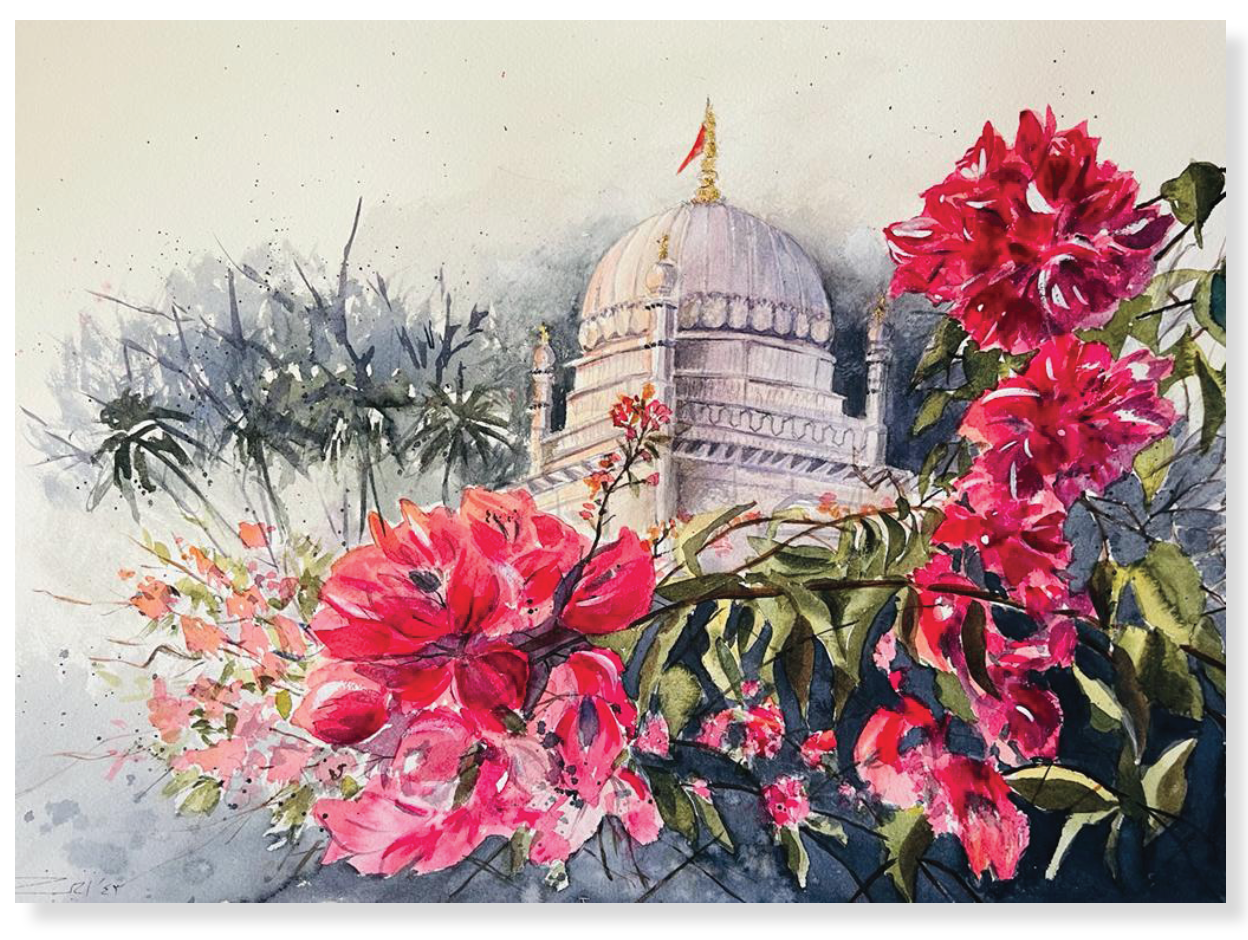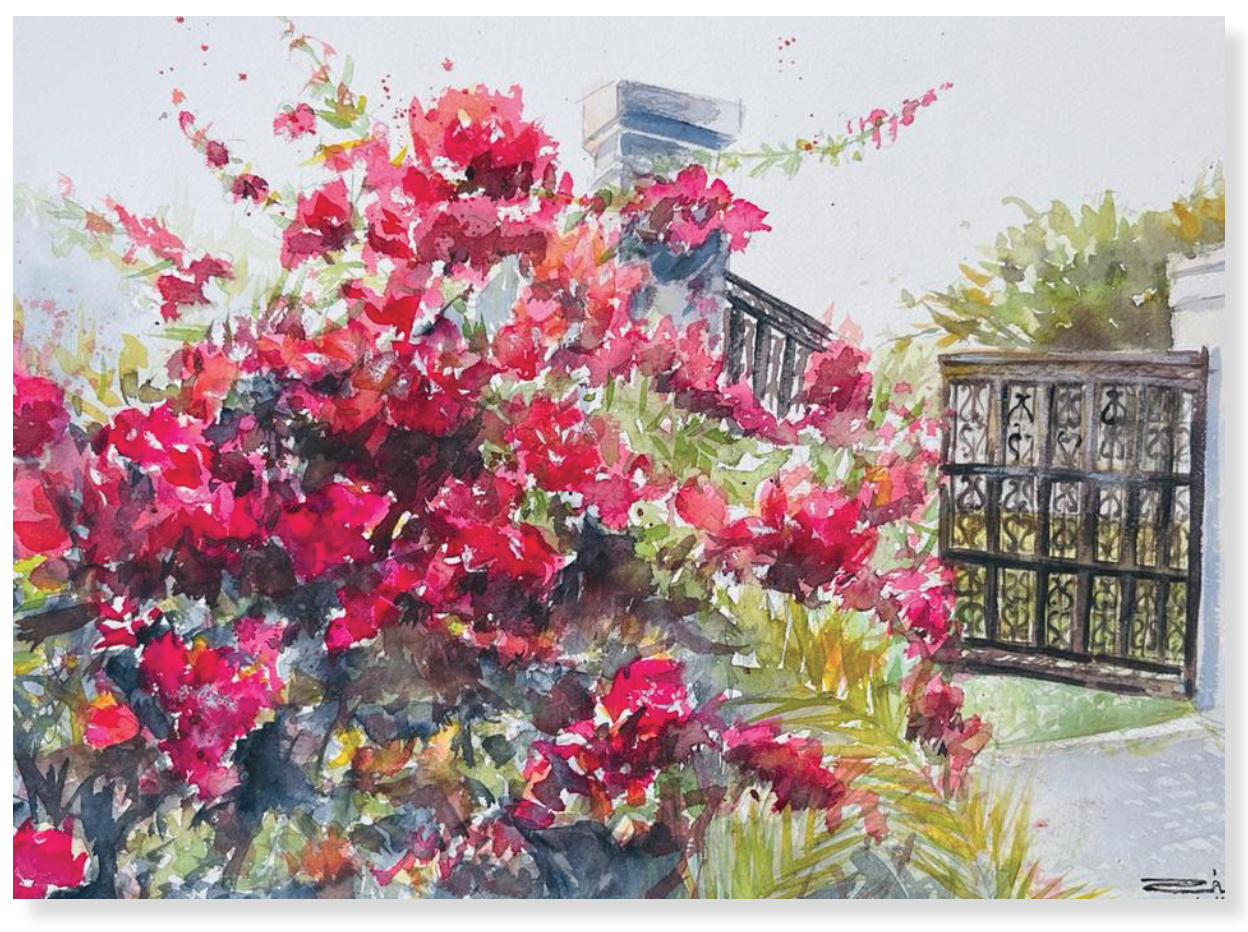

Rāhat
Size: 14”x20” // Medium : Watercolours
The third waaz of Ashara Mubaraka 1443 H was based on the following kalaam mubarak by Imam Ali bin Abi Talib SA>:
طلبت الراحة فوجدتها في ترك الهوى
I sought comfort and found it by letting go of whims and fancies.
The locally grown bougainvillea at Mazar-e-Fakhri – Taherabad (Photograph: @Burhan.raj) reflects seeking rahat, comfort, by rising above our hawa nafsi, whims and fancies, shown by the hedge below. Ultimate rahat is experienced when we seek the ideals of Awliya Allah AS, represented here by the Qubbah Mubarakah of Syedi Fakhruddin al-Shaheed RA, who is the personification of safa, inner purity, that continues to manifest today in the Zaat Mubaraka of our Dai al-Zaman TUS.
Drawing upon the Rasail of Ikhwan al Safa, Syedna Mufaddal Saifuddin TUS elaborated that comfort is found by maintaining balance and moderation. Fatigue is a result of the upset in the body’s internal equilibrium. People seek measures for relaxation by going on vacations in the hope of feeling rejuvenated and renewed to take on the tasks that lie ahead of them. Yet despite this vacation, the presence of hawa nafsi stops them from experiencing comfort even when they are in such an environment.
One manifestation of hawa nafsi is tawahhum, assumptions and whims that have no beneficial basis. Such assumptions or whims hinder us from finding rahat in everyday life.
After a long break from Instagram, I’m back! Rejuvenated to stir the beauty hidden within us all by sharing a humble process in seeking rahat from tawahhum.
Knowing that hawa is tawahhum, we can identify the hawa that stops us from finding rahat in day to day life and then examine it for its truth quotient.
Our tawahhum pesters us to feel less than; it constantly makes us under-validate ourselves and our achievements, and it even forces us to find the faults in others and judge them based on prejudice. It keeps on criticizing us on how we never do enough to stand out, or give enough to be counted, or how we have less and we should have more, or push more in order to prove our worth to the world outside in order to gain their admiration and validation. It tells us how people who have wronged us should not be forgiven or to not do ehsan on the ones who have hurt us because it insists that instead they should be taught a lesson. It also dictates us as to how people around us should behave, as though we know better how life is to be lived and that we have the right to set that gold standard for everyone else too!
This encounter with our hawa nafsi is discomforting. Its authoritative presence inhabits our heads. How does one deal with it? How can we ever truly relax when the pressure put by our hawa is so high? At times, it exerts pressure on us through demands stuck on a loop inside our heads with no room for truth or objectivity to seep in.
Muhasabat al-Nafs –self-reflection done with tafakkur, contemplation, is the nemesis of hawa nafsi because tafakkur considers the merit of our thought, and subsequent speech and action before advocating any course to follow. This gives us a chance to align our thoughts with what our Deen suggests, with what our Maula TUS continually advocates.
Through a daily conscious 30 minute practice of tafakkur, I finally sought rahat when I realized that tawahhum was lesser than the absolute truth and I let it go. That’s when I experienced something far more comforting: safa, inner purity.